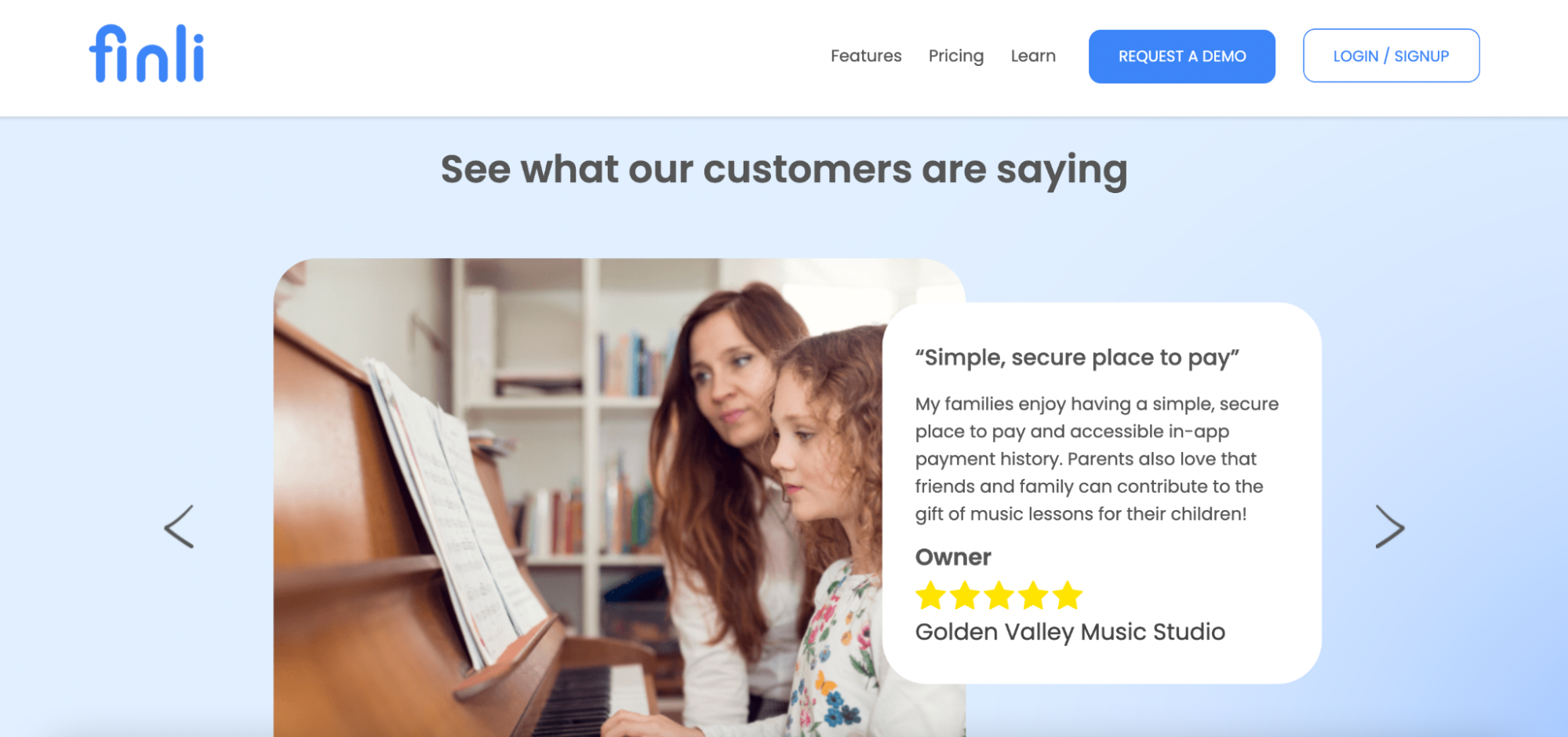

Last updated on
January 30, 2024
Unfortunately for business owners everywhere, there's no such thing as a magic wand that can ensure long-term success. In fact, according to Fundera, the failure rate for small businesses over ten years goes as high as 70%.
Everyone agrees that becoming an industry leader requires a great product and a stellar consumer experience. But fortunately, there are also a few methods for getting to your end goal more quickly.
Digital marketing is definitely one of those tactics. With a strong focus on targeting the online spaces that consumers populate, it allows you to raise awareness about your brand, capture leads, then slowly guide those leads through the sales funnel.
And the best thing is, once a person becomes a client, you can use proven digital marketing techniques to turn them into a returning customer, minimizing advertising costs and increasing your ROI.
But to do all that, you first have to achieve your goal of getting more leads. And, it turns out that displaying social proof on your landing pages could be one of the more effective ways of doing so.
Before we go into the best ways of displaying social proof on your landing pages (as well as other digital marketing channels), it's not a bad idea to look into the reasons behind why this strategy works.
From a psychological perspective, social proof is the guiding force for people when they find themselves in a position of uncertainty. For example, they may be unsure of how to behave in a situation. Or they could need help in making a purchasing decision. Under both of these circumstances, people are more than likely to adopt the behavior of their peers.
So, how does this relate to getting more leads for your business?
Statistical data shows that a majority of buyers seek out testimonials before making a purchasing decision. According to the Local Consumer Review Survey from 2020:

Source: brightlocal.com
Knowing this data, it's only natural that you should look for ways to communicate why potential customers should trust your brand. Fortunately, adding social proof to your landing pages is a great way to do so.
Now, you may already be aware of the importance of displaying testimonials on your website, but there's always the question of the most effective ways to communicate a message. (Spoiler alert: there's no one best way of displaying social proof).
Fortunately, however, there are numerous strategies you can implement and combine. More importantly, you can test each design change with analytics or A/B testing tools, ensuring that the final version of your landing page ends up being the one that's the most effective at capturing leads.
So, if you're ready to get to work, here are a few proven-to-work ideas on how to use testimonials on your landing pages to get more leads.
What's one of the easiest ways to communicate objective information (or at least present that information as objective)? Without a doubt, it's by using numbers. With that in mind, it's easy to conclude that using numbers when displaying social proof makes for an excellent strategy.
Now, this doesn't mean that you need to make up statistics or give false information. But, if you have data that might persuade your target audience to place their trust in you, it would be foolish not to use it.
There are many examples of brands using numbers to display testimonials and social proof.
SomniFix, for instance, includes a "People love us" section on its homepage, displaying a few relevant pieces of data about its product. To make it more believable, the brand chooses to also include a couple of specific reviews, making it really easy for potential customers to give its products a try.

Source: somnifix.com
Fortunately, displaying your average Google rating isn't the only way to use numbers. The journaling app, Day One, for example, simply states that it's "The #1 app for journaling." Remember that this isn't just a simple claim, but a fact. This app really is the highest-rated one of its kind on the App Store.

Source: dayoneapp.com
If you don't want to source ratings and reviews from third parties, you can also set up a simple review system on your website like in this example from LMNT. The brand has thousands of product reviews left by satisfied customers, and it displays it in a way that shows off these reviews as a bonus product feature.

Source: drinklmnt.com
Numbers make for a great way to market your product, but they're not the only strategy with impact. In fact, many marketing experts say that emotions sell way better than facts. And what better way to evoke positive brand associations than by sharing impressions left by your satisfied customers?
There are many great examples of brands displaying social proof in a personalized manner.
Finli does it by opting to show off specific reviews. Some of the brand's customers have written about the precise ways in which the software solution helps them run their business. So, the brand uses those and pairs them with relevant images. The reason such an approach works is that it allows potential customers to discover ways in which the app could benefit them.

Source: finli.com
Mind Node, on the other hand, dedicates an entire section of its blog to its users. By writing about different ways in which clients use the app's features, then displaying the maps they have created, this company does an excellent job of showing off the versatility of its product.

Source: mindnode.com
Another great way to add social proof to your landing pages? Hire experts.
In a 2014 joint study by Nielsen and Relevance, researchers found that:
Moreover, the study found that expert endorsements were 38% more likely to positively impact purchase intent than branded content and an astonishing 83% more than user reviews.
Now, this data doesn't come as a surprise. If you look at the popularity of unboxing and review videos on YouTube, you'll see how effective such content can be. And the best part is, you can leverage expert opinions and reviews to boost your brand's lead generation results.
There are several ways of doing this.
On the one hand, you can display quotes from trustworthy sources that mention your products. Bay Alarm Medical does this on its homepage, showing off a product mention from NBC Today.

Source: bayalarmmedical.com
On the other hand, you can opt to invest in high-quality content written by you (an established expert in your field) or an authority in your industry. Then, you can use that content for lead generation, preferably by turning it into a gated resource.
Finally, it's also not a bad idea to mention any of your high-profile clients. Zoom does this well, having filmed testimonials from companies such as Uber, Zendesk, and 20th Century Fox.

Source: zoom.com
If you're looking for a hassle-free way to include social proof on your website, you might want to consider using widely accepted trust badges. Even something as simple as ensuring that your site is secured with HTTPS can make your potential customers more likely to turn into leads.
You can also create your own trust badges, as Zarely did. This brand guarantees that its products are the same as the sample image, which encourages web visitors to purchase.

Source: zarely.com
As for SaaS businesses, product integrations make for a great alternative to trust badges like Paypal has on their site.
Simply put, if your clients already use a particular software option and your product integrates with it, they'll be more likely to turn into leads and future customers. A standard example of this comes from PayPal, as the company encourages potential users to "Check out with millions of brands [they] love."

Source: paypal.com
This strategy for displaying social proof on your landing pages is, perhaps, the most exciting one.
By finding people whose personalities and values align with those of your brand, you can create engaging web pages that will speak to your potential customers and convince them that you're the absolute best choice for their needs.
With brand ambassadors, your biggest gain will be an increase in reach. Seeing as most influencers and celebrities already have large followings and that these people tend to look up to them, even a single mention can get you great results.
You can even take things a step further and enlist their help to develop a new product or line of items.
That's what Adidas did with Pharrell Williams, employing the singer's unique vision to make its brand appealing to the lovers of premium minimalist aesthetics.
In addition to dedicated landing pages, social media posts, and hyped press releases, the brand also created an 18-minute video which it uses as a combination of content marketing and social proof.
[embed]https://youtu.be/-5lmW0RQSnU[/embed]
Best of all, you don't have to have a sky-high budget to make this type of testimonial work for you. In fact, you can get similar, if not better, results by working with micro-influencers.
In addition to providing you with valuable social proof you can embed on your landing pages, these micro-celebrities also tend to enjoy a high level of trust coupled with engaged audiences.
Furthermore, they're usually easily approachable, making them the perfect option for small businesses.
Last but not least, if you're looking for an impressive way to show off testimonials, it might not be a bad idea to integrate UGC on your website.
MAC Cosmetics does this wonderfully, with a dedicated Social Gallery page on its website. Here, the brand shows off impressive make-up creations from its customers. Moreover, it invites anyone interested to join the movement with a simple social media tag.

Source: maccosmetics.com
You can easily do the same by coming up with a dedicated hashtag or by practicing social listening. Embrace the power of social walls to display user-generated content seamlessly. Or, if you're just starting out, encourage existing customers to tag you in their social media posts by offering special perks or the chance of being featured on your website and social media feeds.
As you can see, there are multiple ways of making social proof work in your favor. And not just when trying to capture new leads, but when widening your reach and establishing your brand as well.
However, to make the most of trust-driving content (especially if conversions are your goal), you'll need to keep a few things in mind:
There are clearly multiple ways you can effectively add social proof to your landing pages. Whether you decide to take inspiration from one of these examples or do your own thing, you'll definitely see the benefits.
Nonetheless, don't forget to consult analytical tools to ensure your design choices provide the desired results. And don't be afraid of shaking things up or even combining several approaches. After all, the best marketing strategies never prioritize a single tactic. Instead, they make different methods work in cohesion for the best possible outcomes.
Rukham is the Content Lead at Mailmunch. He believes trust should be the basis for all marketing communications.
Tags:

M. Usama
February 23, 2024

Hamna Abid
July 31, 2023
.png)
Ammar Mazhar
March 17, 2023